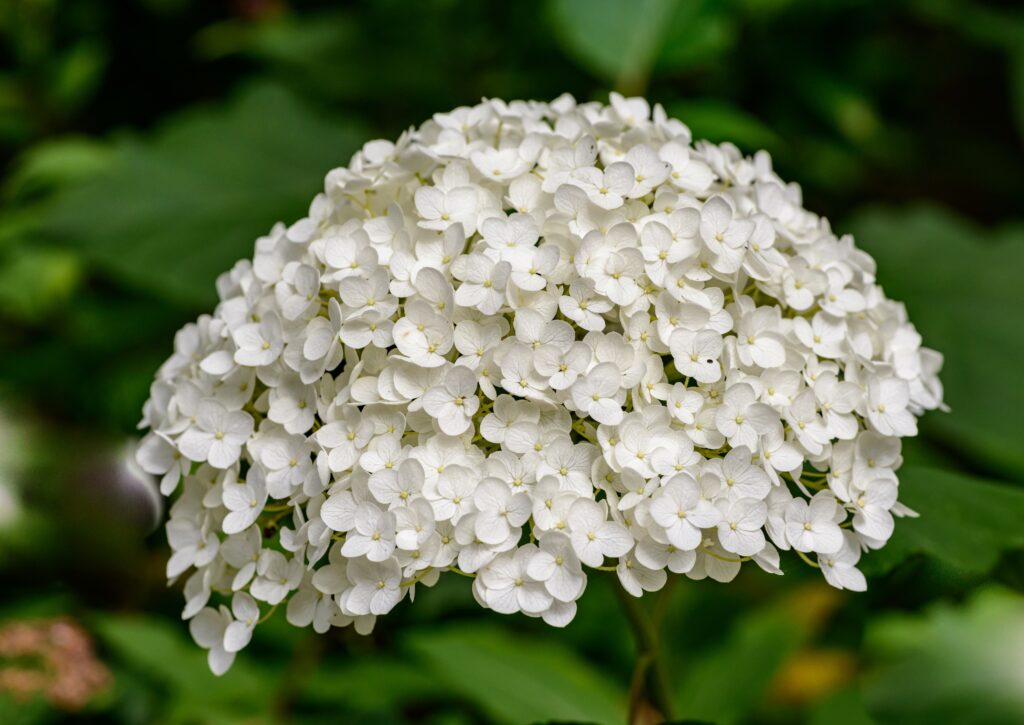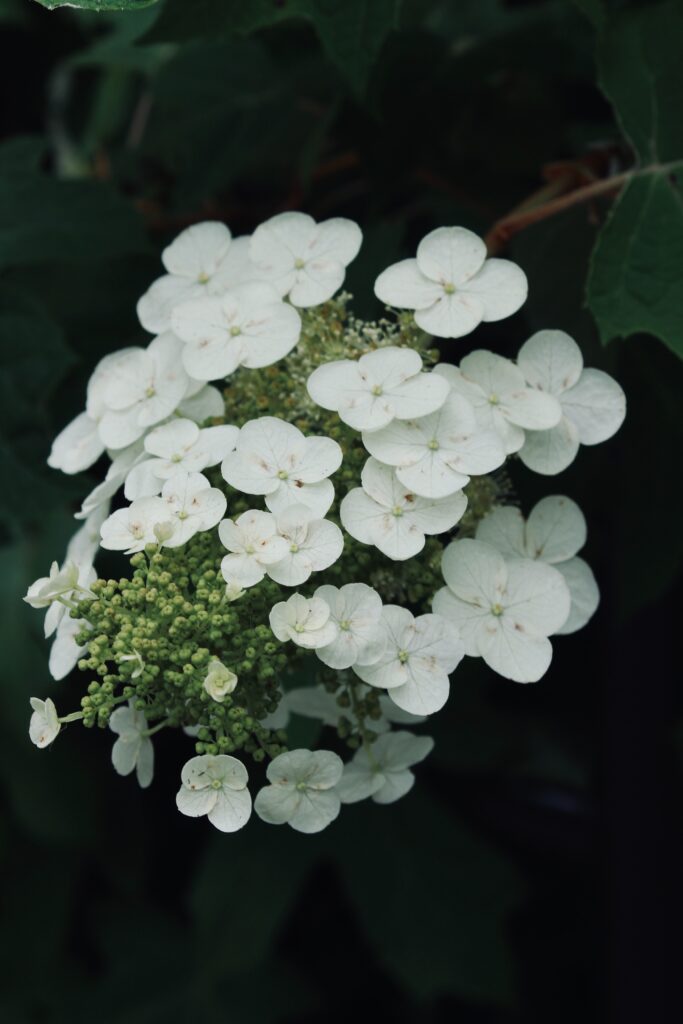Learning To Safely Prune Hydrangeas:
This is one of the most common conversation points we encounter when walking properties with homeowners. When people are looking to update their landscape, they typically want a low-maintenance landscape that requires minimal thought and effort on their behalf. Erroneous perceptions of hydrangea pruning can hamper people’s willingness to invest in this plant, but it doesn’t have to! In order to maximize your hydrangea blossoms, we first need to know what kind of hydrangea it is. This is where having a knowledgeable landscape service provider like American Gardens comes in handy.
There are four main players in the Chicago area hydrangea game. Continue reading below to learn how to safely prune hydrangeas no matter what type it is!
Smooth Hydrangea (Hydrangea Arborescens):

As we meet people in the area, the “plant with the big white snowballs” is what most people visualize when we mention hydrangeas. This visual is typically followed by a concerned, “but I don’t want them to flop. Hydrangeas always seem to fall onto the ground and I don’t like that”. The “flopping” plant people are thinking of is an Annabelle hydrangea and while it has its place in the landscape, there have been many new introductions to this species over the years.
With improved stem strength, Incrediball hydrangea and Invincibelle Spirit II are two of the more common varieties available to keep your “snowball hydrangea” upright. All these plants bloom on new growth, so smooth hydrangea can be pruned to the ground in spring or late fall and not adversely affect flower production. I recommend leaving half or 1/3 of last season’s stalks standing about 12”-18” tall. This helps act as a “tomato cage” for the plants and decreases the flopping potential.
 Panicle Hydrangea (Hydrangea Paniculata):
Panicle Hydrangea (Hydrangea Paniculata):
These are my personal favorite. I try to describe them as upright hydrangeas with cone-shaped flowers, that do not flop and are the epitome of a low-maintenance shrub. In an ideal world, you wait til spring when little buds of new growth can be seen on the stems. Take your hand snips and prune just above this “node” or bud. That means a new flower-producing stem will shoot out from that location. You can prune it in the fall as well and will truthfully not do any harm to the plant. Limelight, Strawberry Sundae, Bobo, and Quickfire are some of the area’s more common varieties. These are a black thumb’s dream hydrangea!

Oakleaf Hydrangea (Hydrangea Quercifolia):
Now we are getting a little complicated. You will know if you have an Oakleaf hydrangea, they are very distinct. It has a leaf that is large with defined ridges that, wait for it, look like oak leaves but have amazing fall color! You can identify it in the winter by its exfoliating bark. This plant blooms on old wood, which means buds form on the stems left after the leaves fall off.
Since it blooms on last year’s growth, DO NOT PRUNE oak leaves in spring because you will remove all the fall buds and eliminate this year’s potential flowers. Prune this one after it flowers if you want to control growth and direction. Some local varieties are Alice Oakleaf, Jetstream, and Snow Queen.
Bigleaf Hydrangea (Hydrangea Macrophylla):

These are the hydrangea that understandably intimidates people the most. Often billed as hydrangea that bloom on old and new wood, these are your hydrangea that is primarily in the pink and blue color families. Endless Summer Hydrangea is the most common subspecies and if I’m being honest, the most difficult hydrangea to get to look like pictures on the web. Other common subspecies like Twist ‘n’ Shout, Nikko and Cherry Explosion can be determined by either their lace cap or mophead flower.
Prune all of these after they flower, but make sure to revisit them in the spring to remove any damaged or broken stems. The reality is that if there is a late frost, as is customary here in Chicago, any buds that have begun on spring growth will fail and all the time you invested will be for naught.
Pruning hydrangea really is a simple process, as long as you remember what you planted. If you don’t know what it is, give us a call and we can walk the property together, talk through what you have and set you up with a maintenance program that will make your landscape truly a low to no-maintenance property!
